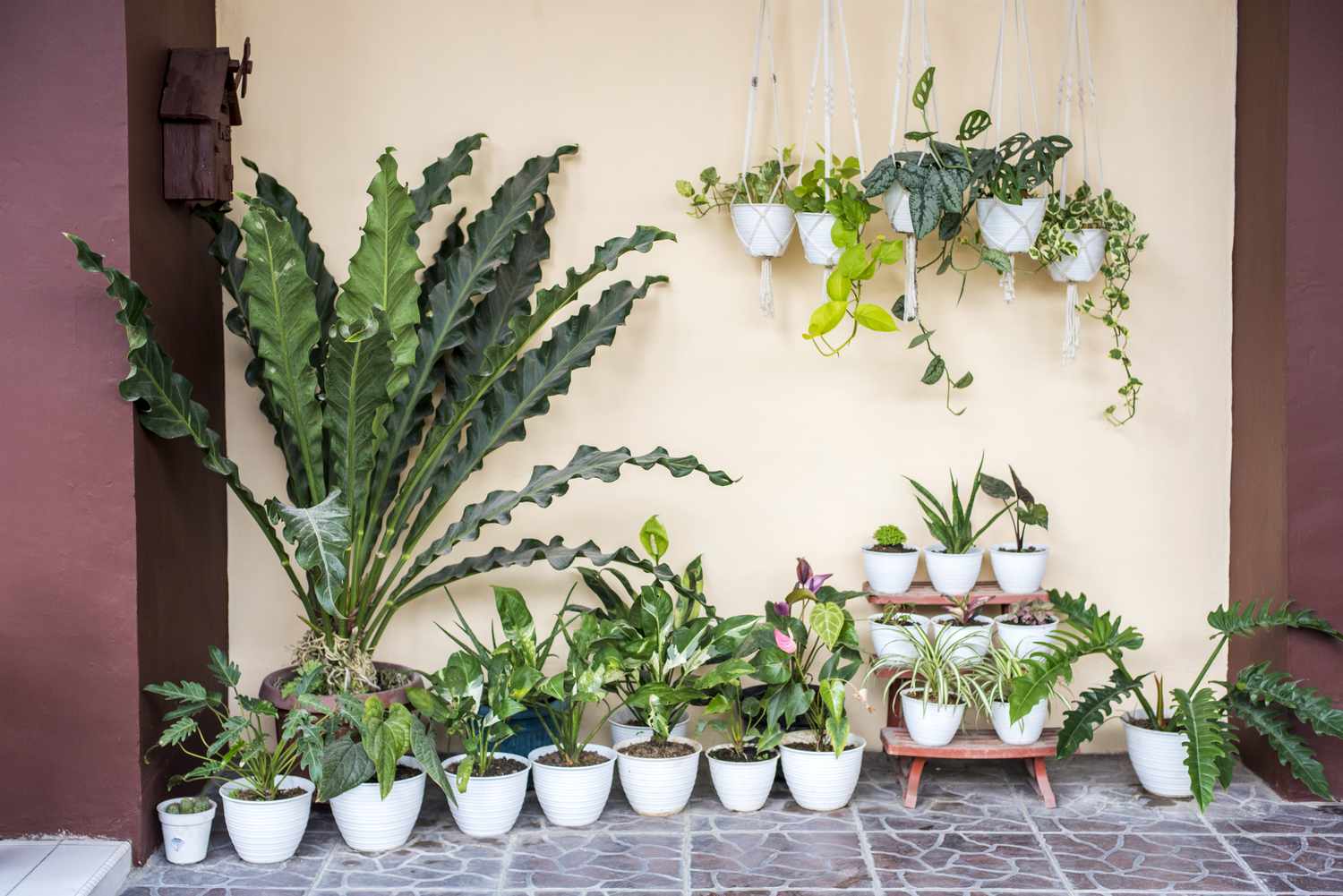We probably don’t have to tell you how many benefits parks and green spaces can provide for people who live in cities. Increasing time spent among greenery by just 10% can lead to a 4% drop in premature mortality, and people who grow up with less green space nearby have as much as a 55% increased risk of developing psychiatric disorders such as depression, anxiety, and substance abuse later in life.
Parks with large tree canopies have even been shown to decrease crime rates inside cities, with correlations found between spots with 10% more tree canopy and an 11.3% reduction in robberies, according to a study published in the journal Landscape and Urban Planning.
What makes a city park special? Easy access to public open space and nature—even in the busiest of metropolitan areas—with an emphasis on community. These are just 15 of the best city parks in America.
Falls Park
Located in Sioux Falls, South Dakota, this park is known for exactly what one would expect: waterfalls. The park is made up of over 128 acres just north of the downtown area along the Big Sioux River, best viewed via the park’s very own five-story observation tower.
The waterfalls themselves are pretty impressive, as there’s an average of 7,400 gallons of water dropping 100 feet over the cascading falls every second.
Named for the Sioux Indigenous tribes that first inhabited the land, some of the city’s most historic buildings also lie within the park. A local restoration project called Friends of the Big Sioux River is working to protect the area with a riparian buffer zone that includes native grasses and wildflowers.
Fairmount Park
Fairmount Park in Philadelphia, Pennsylvania, boasts over 2,000 acres of natural landscapes, including trails, a waterfront, hills, and woodlands, all within the boundaries of the city.
Visitors can explore the green areas cycling, horseback riding, and hiking, or enjoy live music in one of the two outdoor concert venues. The famed Philadelphia Museum of Art sits at the gateway of the park, as well as the Philadelphia Zoo and the Shofuso Japanese House and Garden.
The Fairmount Park Conservancy leads capital projects to maintain the natural lands here, planting trees and investing in historic architectural conservation programs as well.
Zilker Park
A 361-acre park in the heart of downtown Austin, Texas, Zilker Metropolitan Park is famous for its spring-fed waters. Visitors can swim in the thermal Barton Springs Pool, heated naturally to 68 degrees Fahrenheit, rent canoes or bikes, and enjoy a large playground for children.
The pools aren’t just for swimming, however, as they are also an integral part of the local aquatic ecosystem, protected by the Barton Springs Conservancy.
The park also features a lush botanical garden with fascinating theme gardens to explore. Along with a Japanese garden and an herb garden, there is also a prehistoric garden with real fossilized dinosaur tracks and life-sized dinosaur sculptures hidden amongst the plants.
Gathering Place
Gathering Place: Tulsa’s Riverfront Park in Oklahoma is used for a wide range of family-friendly recreational activities, like a massive adventure playground (made using timber from the trees removed during construction) and elevated skywalk forest.
The park is also committed to enhancing the local River Parks system with ecology revitalization programs that plant native trees onsite. There are two 300-foot land bridges to connect the park with the riverfront, allowing for a continuous canopy over the roadway and a safe passage for animals.
A relatively new venture, the park was officially opened in 2018 after four years of construction, funded by a combination of corporate and philanthropic organizations with input from the community. After the remaining construction phases are complete, the park will span 100 acres.
Gas Works Park
Easily one of the most unique parks on the list, Gas Works Park was constructed on top of a former coal gasification plant in Seattle, Washington. At just 19 acres, the park was first opened to the public in 1975, with its Great Earth Mound Summit quickly becoming the park’s defining landmark.
The summit was constructed using recycled materials that were excavated from the site, the large boiler house was converted into a picnic shelter with tables and grills, and the exhaust compressor building is now a colorful open-air play barn for children.
As for the existing soil, previously polluted from years of industrial use, the park designer was able to use a natural bioremediation process to create livable environments for new plants.
Forest Park
At 1,300 acres filled with trees, natural reserves, lakes, and streams, it’s not hard to see how Forest Park in St. Louis, Missouri, got its name. It’s been around since 1876, even hosting the World’s Fair in 1904, and nowadays contains an impressive 45,000 trees.
Each year, more than 13 million visitors come to enjoy the park’s ecosystems and natural spaces, all of which are connected with a dual path system that allows for leisurely walks on one side and jogging or workouts on the other.
The park is protected by the nonprofit conservancy Forest Park Forever and community-funded programs that help manage capital restoration projects, deliver educational experiences, and maintain the urban public park.
Balboa Park
Located in San Diego, California, Balboa Park’s 1,200 acres contain 16 museums, a variety of performing arts venues, gardens, hiking trails, and the famous San Diego Zoo.
The Alcazar Garden includes an abundance of seasonal plants and flowers, while the park’s Palm Canyon hosts more than 58 different species of palms within two acres.
The mild climate and assortment of landscapes make Balboa Park a haven for hundreds of native and migratory birds, including great egrets, red-shouldered hawks, horned owls, and vibrantly colored hooded orioles.
Portland’s Forest Park
Portland’s Forest Park in Oregon stretches across 5,200 acres with more than 80 miles of trails and seven miles of sloping land along the Tualatin Mountains, overlooking the Columbia and Willamette Rivers.
The Forest Park Conservancy recently created the Greater Forest Park Conservation Initiative, which is working to restore and protect the park as well as its surrounding ecosystem for a total of 15,000 acres. Through a coalition of local support, the program has initiated a series of projects to address invasive species, climate change, and wildlife habitat fragmentation.
Hermann Park
Located just minutes from downtown Houston, Texas, Hermann Park includes an outdoor theater, a jogging track, a rose garden, a butterfly exhibit, and the Houston Museum of Natural Science.
The park itself encompasses 445 acres, including 8-acre McGovern Lake with a newly restored island designed especially for migratory birds. The award-winning Hermann Park Conservancy oversees the park’s natural resources as well as multi-million dollar renovation projects and reforestation plans in Houston.
Currently, the conservancy is working on improvements that will touch 223 acres of parkland, bringing in 20 miles of new and improved trails, 55 acres of new and improved habitat, and 2,000 new trees.
Patterson Park
A park steeped in history, Patterson Park in Baltimore, Maryland, was the site of a famous battle during the War of 1812 and later served as an Army hospital during the Civil War. Of course, these days the park is visited instead by active community members, neighborhood schools, and residents who come to enjoy the park’s 133 lush acres.
Patterson Park is overseen by the Patterson Park Audubon Center, which focuses on the conservation and restoration of Baltimore’s natural ecosystems with projects like after-school climate activist programs and bird-friendly native plant/habitat programs.
White River Park
White River Park in downtown Indianapolis, Indiana, is a 250-acre retreat located along the White River. Its landscape showcases the area’s native flora and fauna species (including beavers and bald eagles), as well as the city’s first monarch butterfly sanctuary. The Urban Wilderness Trail traverses the park and all its natural beauty. You’ll also find the Eiteljorg Museum of American Indians & Western Art inside the park.
Falls Park on the Reedy
Falls Park on the Reedy is located on the west end of downtown Greenville, South Carolina. This 20-acre park has become a favorite of local residents, who come to picnic under the 345-foot long Liberty Bridge and enjoy the scenic waterfalls.
The park was first opened in the 1960s, when the Carolina Foothills Garden Club reclaimed a parcel of land previously used for three textile mills and a cotton warehouse. At the time, the industrial nature of the site had led to severe pollution within the Reedy River, but with help from the local community and the City of Greenville, the garden club was able to clean up the river, restore the historic architecture, and open public gardens on the park’s property instead.
Prospect Park
While New York is more often associated with Central Park, the 585-acre Prospect Park in Brooklyn is known for having far fewer crowds. This stunning green space hosts ice skating, horseback riding, the Brooklyn Botanic Garden, and a large meadow to enjoy picnicking and lounging.
The Prospect Park Alliance doesn’t just care for the park’s woodlands and natural areas, but also restores park buildings, conserves landscapes, and organizes volunteer, education, and recreation programs for the local community. The Alliance’s Landscape Management team plants 5,000 trees, plants, and shrubs each spring, and in 2020 it collected almost 2,500 bags of trash.
Golden Gate Park
California’s famous Golden Gate Park in San Francisco packs a lot of environmental attractions into its 1,017 acres. It houses the California Academy of Sciences, the Japanese Tea House and Garden, the De Young Museum, and Golden Gate Aquarium, just to name a few.
The San Francisco Botanical Garden at Strybing Arboretum conserves more than 8,000 varieties of plants, both native and non-native. Visitors can also experience the oldest remaining municipal wooden conservancy in the United States, the Conservatory of Flowers, the gardens of which contain almost 2,000 plant species.
Lincoln Park
Named for former President Abraham Lincoln, Chicago’s Lincoln Park totals 1,188 acres along Lake Michigan in Chicago, Illinois.
The Lincoln Park Conservatory & Gardens replaced a small greenhouse back in 1890 which now holds exotic plants in four separate display houses: the Palm House, Orchid House, Fern Room, and Show House. The Lincoln Park Conservancy’s North Pond Restoration Project is currently working on a three-year plan to dredge the pond, restore its shoreline, and expand the natural surrounding areas to conserve the dying ecosystem and protect the aquatic habitats there.




